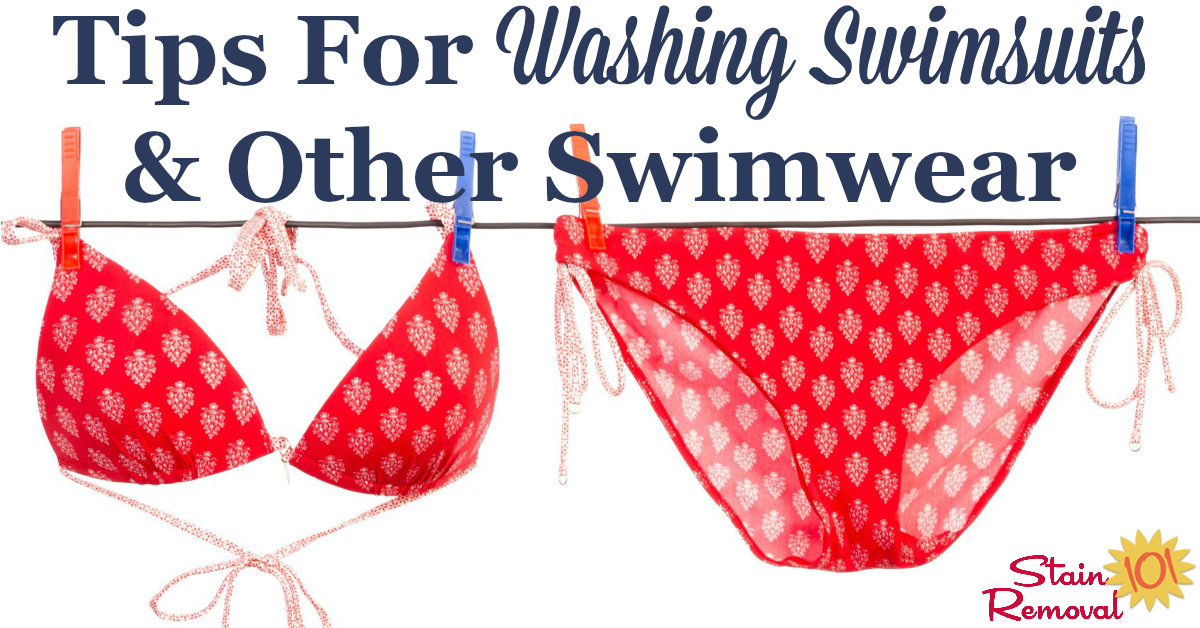Content Menu
● Why Do You Need to Wash Swimwear Before Use?
>> 1. Removing Factory Chemicals and Residues
>> 2. Eliminating Manufacturing and Storage Dust
>> 3. Preventing Excess Dye Transfer
>> 4. Improving Comfort and Fit
● How to Wash New Swimwear Before Use
>> Hand Washing Method
>> Machine Washing Method
● The Science Behind Washing New Swimwear
>> Chemical Residues and Skin Health
>> Bacteria and Hygiene
>> Color Fastness and Longevity
● How Often Should You Wash Swimwear?
● Best Practices for Washing Swimwear
● Do You Need to Wash Swimwear Before Use? What the Experts Say
● Frequently Asked Questions
>> 1. Do you need to wash swimwear before use if you have sensitive skin?
>> 2. Can you wash swimwear in the washing machine?
>> 3. Should you use fabric softener when washing swimwear?
>> 4. How do you remove stains from swimwear?
>> 5. How should you dry swimwear after washing?
● Conclusion
● Related Questions & Answers
● Citations:
The excitement of buying new swimwear is undeniable—the vibrant colors, the perfect fit, and the anticipation of your next beach or pool adventure. But before you slip into that brand-new swimsuit, an important question arises: Do you need to wash swimwear before use? This comprehensive guide explores why washing your swimwear before the first wear is essential, how to do it properly, and answers the most common questions about swimwear care.

Why Do You Need to Wash Swimwear Before Use?
1. Removing Factory Chemicals and Residues
New swimwear may look clean and pristine, but it often contains residues from the manufacturing process. These include dyes, fabric finishes, and preservatives that help maintain color and elasticity during production and shipping. Unfortunately, these chemicals can cause skin irritation or allergic reactions, especially for those with sensitive skin[1][2][3]. Washing your swimwear before use helps remove these residues and makes the garment safer for your skin.
> According to DermNet NZ, textile chemicals can trigger skin conditions like contact dermatitis, making it essential to wash new clothing before first use[1].
2. Eliminating Manufacturing and Storage Dust
Swimwear passes through many hands during production, packaging, and shipping. Even if it appears spotless, invisible dust, dirt, and bacteria can settle on the fabric. A thorough wash ensures you're not exposing your skin to unwanted contaminants[1][2].
3. Preventing Excess Dye Transfer
Brightly colored swimwear often contains highly pigmented dyes. If not washed before first use, these dyes can bleed when exposed to water, potentially staining your skin, towels, or other clothing. Washing helps remove excess dye and prevents unwanted color transfer[1][4][3].
4. Improving Comfort and Fit
A fresh wash can soften the fabric, remove any stiff residues, and allow the swimsuit to settle into its natural stretch. This not only makes the garment more comfortable but also ensures a better fit when you wear it for the first time[1][5].
How to Wash New Swimwear Before Use
1. Read the Care Label
Always check the manufacturer's care label for specific instructions. Most swimwear is made from delicate synthetic materials like nylon, polyester, or spandex, which require gentle handling[6][7].
2. Prepare a Gentle Wash Solution
- Fill a sink or basin with cool or lukewarm water.
- Add a small amount of mild detergent or a detergent specifically formulated for delicates or swimwear[8][9][5].
3. Soak and Swish
- Submerge the swimsuit and gently agitate it with your hands.
- Let it soak for 10–30 minutes to loosen any chemicals or residues[2][5][10].
4. Rinse Thoroughly
- Rinse the swimwear in cool water until all soap is removed.
- If desired, add a splash of white vinegar (1 part vinegar to 4 parts water) to the rinse to help neutralize odors and remove excess dye[2][4][5].
5. Remove Excess Water
- Gently squeeze (do not wring or twist) the swimsuit to remove water.
- Roll it in a clean towel and press to absorb moisture[9][10].
6. Air Dry Flat
- Lay the swimsuit flat on a towel in a shaded, well-ventilated area.
- Avoid direct sunlight and never use a dryer, as heat can damage the elastic fibers and fade colors[9][5][7].

Hand Washing Method
The best way to wash your swimwear is by hand. Here's a step-by-step guide:
1. Fill a Basin with Cold Water: Use cold water to prevent the fabric from shrinking or losing its shape.
2. Add Mild Detergent: Use a gentle detergent specifically designed for delicate fabrics. Avoid bleach or harsh chemicals.
3. Soak the Swimwear: Submerge your swimwear in the soapy water and let it soak for about 10-15 minutes.
4. Gently Agitate: Lightly rub the fabric with your fingers to remove any dirt or residues.
5. Rinse Thoroughly: Rinse the swimwear under cold running water until all detergent is removed.
6. Air Dry: Lay the swimwear flat on a clean towel or hang it to dry away from direct sunlight.
Machine Washing Method
If you must use a washing machine, follow these guidelines:
1. Use a Mesh Bag: Place your swimwear in a mesh laundry bag to protect it from snagging.
2. Select a Gentle Cycle: Use the delicate cycle with cold water.
3. Use Mild Detergent: Choose a gentle detergent and avoid fabric softeners.
4. Air Dry: Never put swimwear in the dryer; always air dry to maintain its shape and elasticity.
The Science Behind Washing New Swimwear
Chemical Residues and Skin Health
Textile chemicals used in swimwear manufacturing, such as formaldehyde-based resins, dyes, and finishing agents, can trigger skin reactions in sensitive individuals. Washing removes these irritants and reduces the risk of contact dermatitis[1][11].
Bacteria and Hygiene
Swimwear may harbor bacteria from manufacturing environments or from being tried on by others before purchase. Washing before use is a crucial step in maintaining personal hygiene and preventing potential infections[1][2].
Color Fastness and Longevity
Washing new swimwear helps set the dyes and remove any loose pigments. This not only prevents color transfer but also helps maintain the vibrancy of your swimsuit over time[1][4][3].

How Often Should You Wash Swimwear?
- After Every Use: Always wash your swimsuit after each wear, even if you didn't swim. Sweat, sunscreen, chlorine, and salt can degrade the fabric and elasticity[8][9][5].
- Between Uses: Allow your swimsuit to dry completely before wearing it again to prevent bacteria growth and maintain its shape[7].
Best Practices for Washing Swimwear
| Step | Do's | Don'ts |
| Washing | Hand wash in cool water with mild detergent | Avoid hot water, bleach, and harsh soaps |
| Drying | Air dry flat in shade | Never use a dryer or wring the fabric |
| Stain Removal | Spot treat gently with mild soap | Don't scrub or use abrasive brushes |
| Storage | Store dry, flat, and untied | Don't leave damp or rolled in a bag |
| Frequency | Wash after every use | Don't skip washing, even after sunbathing |
Do You Need to Wash Swimwear Before Use? What the Experts Say
- CRAVEBYFW: "Yes, you should! Washing your swimsuit before wearing it removes factory chemicals, manufacturing dust, and excess dye, and improves comfort and fit."[1]
- Sauipe Swim: "Washing a new swimsuit before wearing it is not only good for the longevity of the garment, but also for your health."[2]
- ROXY: "Yes, it's a good idea to wash new swimsuits before wearing them to remove any residue from manufacturing and to ensure they are clean before they touch your skin."[5]
- SpinXpress: "Yes, it's recommended to wash new swimsuits before wearing them for the first time. This helps remove any chemical residues or dyes that may have been used during the manufacturing process, preventing skin irritation or discoloration."[3]
Frequently Asked Questions
1. Do you need to wash swimwear before use if you have sensitive skin?
Yes. Individuals with sensitive skin are more likely to react to residual chemicals or dyes in new swimwear. Washing before use is especially important to prevent irritation or allergic reactions[1][11][5].
2. Can you wash swimwear in the washing machine?
While some swimsuits may be machine washable on a gentle cycle with cold water, hand washing is always the safest method to protect delicate fabrics and maintain elasticity[8][6][9][5].
3. Should you use fabric softener when washing swimwear?
No. Fabric softeners can leave residues that trap bacteria and damage the quick-drying properties of swimwear fabrics[8][6][7].
4. How do you remove stains from swimwear?
Rinse with cool water, dab on a little mild detergent, and gently rub the fabric together. For stubborn stains, let the suit soak in a vinegar solution before washing[8][4][5].
5. How should you dry swimwear after washing?
Lay the swimsuit flat to air dry in a shaded area. Avoid direct sunlight, dryers, and wringing, as these can damage the fabric and elastic fibers[9][5][7].
Conclusion
Do you need to wash swimwear before use? The answer is a resounding yes. Washing new swimwear before wearing it for the first time is essential for your health, comfort, and the longevity of your garment. By removing factory chemicals, dust, and excess dye, you protect your skin and ensure your swimsuit looks and feels its best. Always follow the recommended care instructions, wash after every use, and handle your swimwear gently to enjoy vibrant, comfortable, and long-lasting swimwear all season long.
Related Questions & Answers
Q1: Do you need to wash swimwear before use if it has a hygiene liner?
A: Yes. While hygiene liners prevent direct contact, they do not remove chemical residues or dust from manufacturing. Washing is still recommended[1][2][5].
Q2: Can new swimwear cause skin irritation if not washed before use?
A: Yes. Residual chemicals and dyes can cause irritation or allergic reactions, especially in sensitive individuals[1][11].
Q3: Is it necessary to wash swimwear after swimming in chlorinated pools?
A: Absolutely. Chlorine can degrade the fabric and elasticity. Rinse and wash after every swim[8][9][5].
Q4: How can you prevent your swimwear from fading?
A: Wash before first use, avoid hot water and direct sunlight, and always air dry flat in the shade[4][5][7].
Q5: Should you wash swimwear with other clothes?
A: It's best to wash swimwear separately to avoid damage from zippers, Velcro, or rough fabrics[5].
Citations:
[1] https://cravebyfw.com/blogs/news/do-you-have-to-wash-swimwear-before-wearing-it
[2] https://www.sauipeswim.com/blogs/journal/how-to-wash-swimsuits-and-other-swimwear-care-tips
[3] https://gospinxpress.com/best-way-to-wash-swimsuits/
[4] https://www.swimcity.com/pages/swimwear-care
[5] https://www.roxy.com/blogs/expert-guides/bathing-suit-care
[6] https://www.c-and-a.com/eu/en/shop/how-to-wash-swimwear
[7] https://www.simplyswim.com/pages/how-to-wash-swimwear
[8] https://laundrysauce.com/blogs/news/how-to-wash-swimsuits
[9] https://us.speedo.com/faq/how-to-wash-a-swimsuit.list
[10] https://www.bondijoe.com/blogs/mens-swimwear-care-and-maintenance/a-comprehensive-guide-to-washing-mens-swimwear
[11] https://www.thespruce.com/how-to-wash-a-swimsuit-2145805
[12] https://www.reddit.com/r/femalefashionadvice/comments/8lmb72/do_you_guys_wash_new_clothes_before_wearing_them/
[13] https://bromeliaswimwear.com/blogs/news/how-to-wash-swimwear-properly
[14] https://www.nytimes.com/wirecutter/guides/how-to-wash-swimsuits/
[15] https://www.bikinivillage.com/us/blog/how-to-care-for-your-swimsuit-the-complete-detailed-guide
[16] https://www.reddit.com/r/Swimming/comments/1ibaom6/wash_then_wear/
[17] https://www.riverisland.com/editorial/swimsuit-tlc-your-essential-washing-guide
[18] https://www.reddit.com/r/whatisthisthing/comments/14wmt1i/yellowish_powder_on_the_inside_of_swimming_suit/
[19] https://www.armandhammer.com/en/articles/how-to-wash-swimsuits
[20] https://www.youtube.com/shorts/UgEWdG6LvZ4
[21] https://www.youtube.com/watch?v=tPYtvdlwUy0
[22] https://www.reddit.com/r/Swimming/comments/1277k2j/how_often_should_i_wash_my_swimsuit/




































